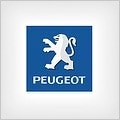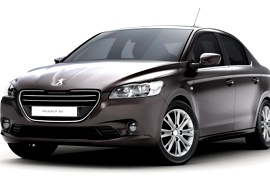
PEUGEOT 301
Generations Timeline, Specs and Pictures

Initially developed for emerging markets, the Peugeot 301 is a compact three-box sedan that offers more interior and luggage space than pretty much all of its competitors.
No less than 640 liters of luggage can be fitted in the trunk, which can be extended thanks to the 2/3 rear folding seat back, thus increasing the luggage compartment volume to 1332 dm3.
First introduced in 2012, the model received a mid-cycle facelift in 2017, which gifted it with a small exterior and interior design revamp and improved technology. The center console now features a 7-inch touchscreen with MirrorLink, Android Auto and Apple Carplay. There is also a 3d TomTom navigation system and a reversing camera, just like on its platform brother, the Citron C-Elysee. On the engine side there are two gasoline versions - a 1.2-liter PureTech with 82 horsepower and a 1.6-liter VTi with 115 horsepower, which can also be optionally paired with a 6-speed automatic transmission. On the diesel front there is a 1.6-liter BlueHDi mill with 100 horsepower. On certain markets there is also a 1.6-liter HDi version with 92 horsepower. All engines are combined with a 5-speed manual transmission as standard.

After the world economic crisis, Peugeot-Citroen started a new lineup of small-segment sedans, mostly for the emerging markets: the Peugeot 301 and the Citroen C-Elysee.
The 301 was unveiled at the 2012 Paris Motor Show. The car was built on a mixed platform with components carried-over from other models in the Peugeot warehouse. In some countries, the sedan was the family choice, while the hatchbacks were considered for reckless young people. That is why the car was not sold in Western Europe but found its market share on the East European market, Turkey, Africa, and Latin America.
The design was basic, with a simple grille and a sculptured hood where the Peugeot badge was glued. As a fancy detail, the word Peugeot was stamped at the top of the grille. On the side, a sculptured ascending line was the only detail that made interrupted the plain, slightly curved, door panels.
Inside, the 308 was offered with basic necessities, such as air conditioning and an option for power-windows. Despite being small, the car was roomy enough for five adult passengers. The trunk was big, with enough room for a week’s luggage. The rear bench seatback was split-folding in 60:40 proportions.
For the drivetrain, Peugeot offered a choice of gasoline or diesel engines mated to a 5- or 6-speed manual gearbox, depending on the engine. An option for a 4-speed automatic was on the options list.























































